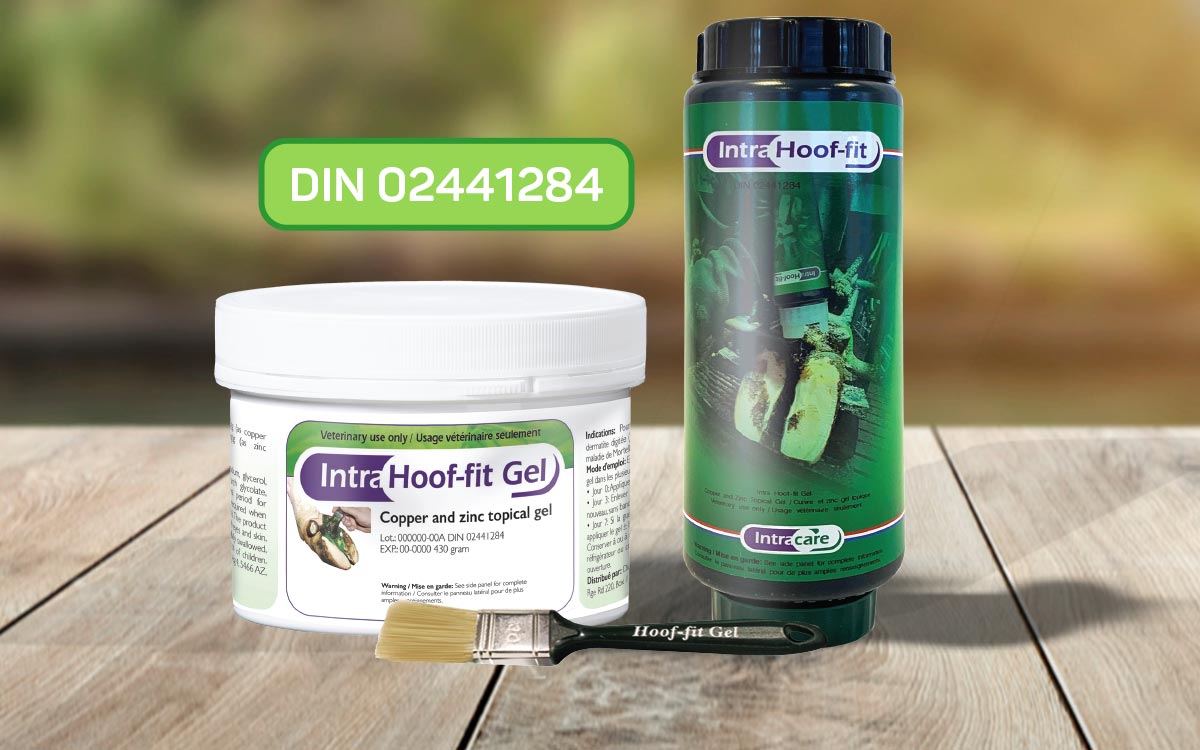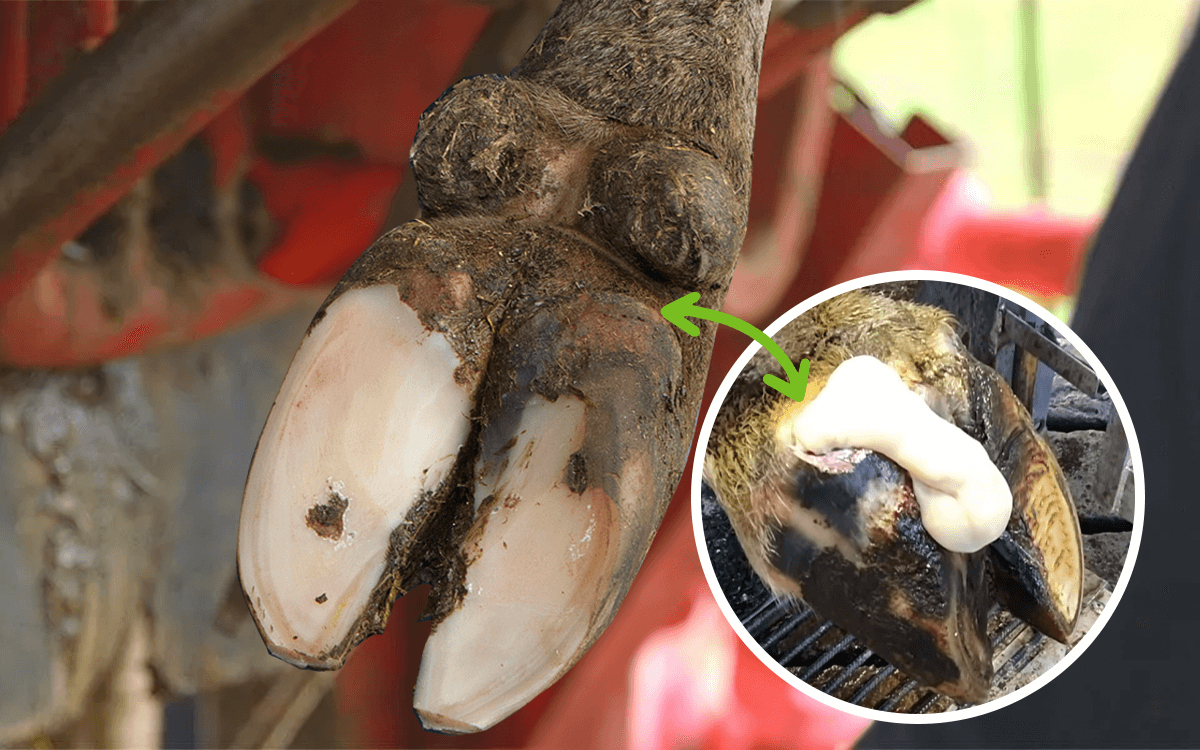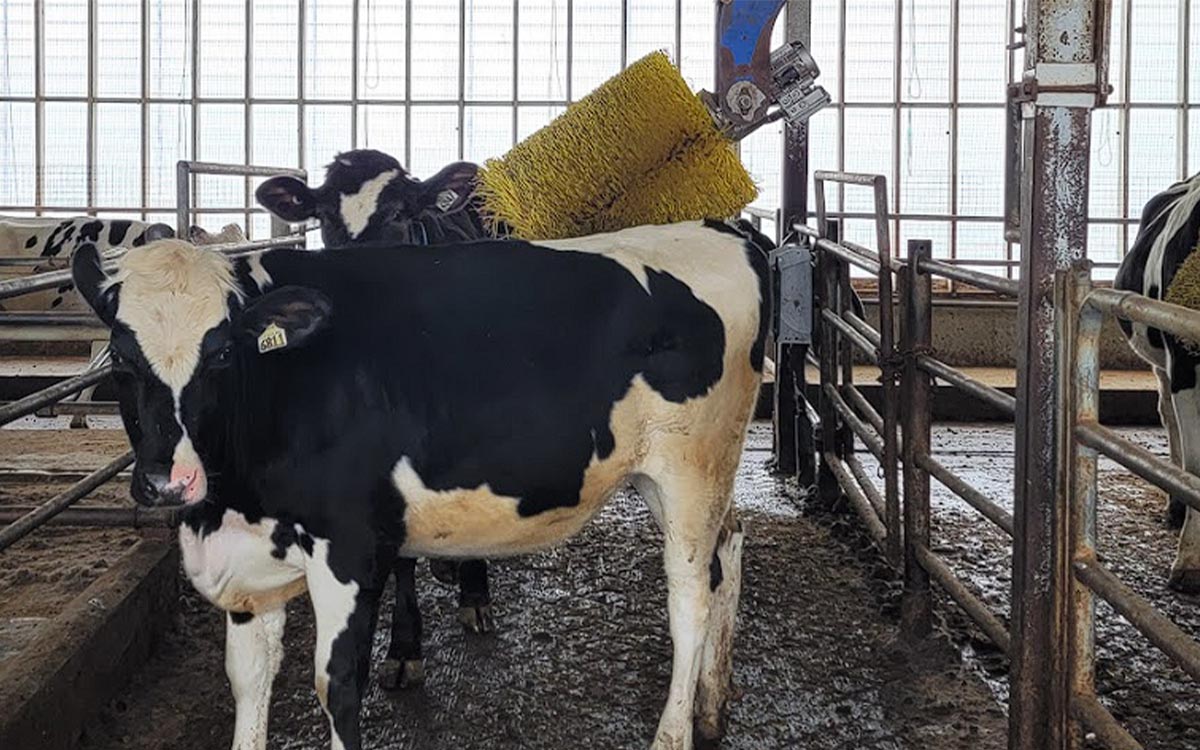Table of Contents
If you’re a dairy farmer, you know that the health and well-being of your herd are of utmost importance. One aspect of herd management that must be considered is foot health. Cows rely on their feet to support their weight and move around the farm, so keeping their hooves in top condition is essential. This is where a hoof care protocol and foot baths come into play. Understanding their importance and implementing the proper techniques can make a world of difference in your herd’s success.
Taking care of cow feet is crucial! Foot baths are an effective solution to maintain their well-being. They prevent foot problems and stop infections from spreading. By keeping your cows’ hooves healthy, you can increase milk production and improve your profits.
Table of Contents
Understanding the Importance of Dairy Foot Baths
We know that healthy cows are happy cows. And happy cows produce more milk, ensuring the financial stability of your farm. The role of foot baths in dairy farming is to prevent hoof-related issues such as foot rot and other contagious hoof diseases, like Digital Dermatitis and Inter-Digital Dermatitis. Regular foot baths not only maintain the well-being of your cows but also help prevent the spread of infections throughout the herd. Think of foot baths as a preventive protocol, shielding your cows’ hooves from harmful bacteria and fungi that can lead to lameness.
Diagnosing of Hoof Diseases in Dairy Cows
Foot baths are intended to be part of a complete herd protocol. Our Intra Protocol is built on a solid foundation of field trials and scientific research. Our protocol starts with paying attention to the lame cow and ensures the hoof challenges are correctly diagnosed. The hoof disease chart can be downloaded for free and gives a complete overview of the different hoof diseases in your herd.
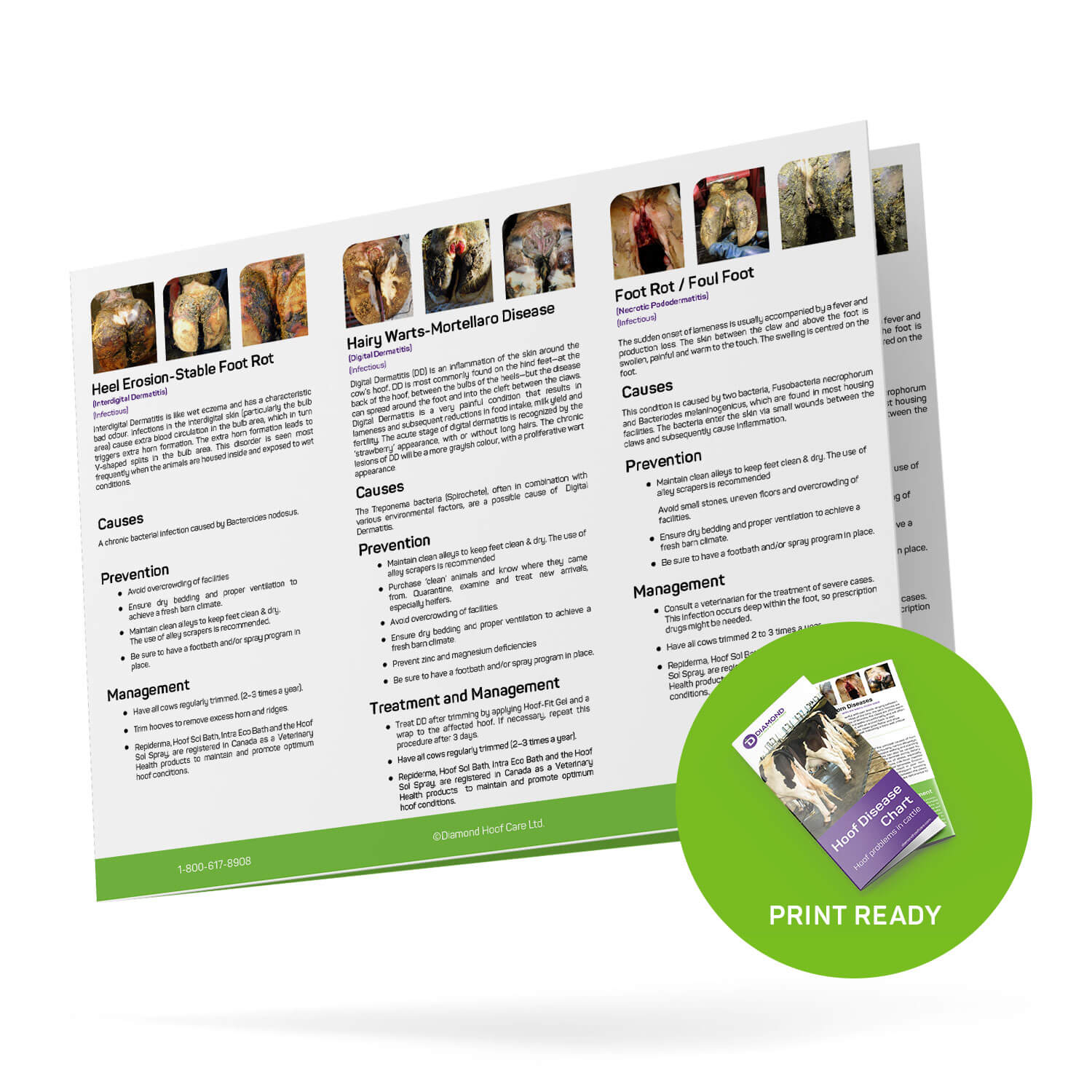
Hoof Disease Reference Chart
The Role of Foot Baths in Dairy Farming
Foot baths are a crucial preventive measure in a dairy farm’s biosecurity plan. They act as a barrier, limiting the spread of contagious diseases among cows. When cows step into the foot bath, the solution cleans and disinfects their hooves, ensuring any pathogens picked up from the environment or other cows are neutralized. By implementing foot baths into your farm’s routine, you reduce the risk of lameness, which not only affects the individual cow but can also impact the productivity and profitability of your entire herd.
Foot baths provide an opportunity for early detection of hoof issues. As cows walk through the foot bath, you can observe any signs of discomfort or abnormalities in their gait. This allows you to identify potential problems early on and take appropriate action, preventing the condition from worsening and causing further damage. Lame cows should not be treated with a foot bath method but should receive timely individual care, such as hoof trimming and treatment.
Another aspect of foot baths is their role in maintaining the overall cleanliness of the hooves. As cows walk through the foot bath, any dirt or manure on their claws is washed away, preventing the accumulation of organic matter that can harbour bacteria and increase the risk of infections. Keeping the environment clean and hygienic creates a healthier and safer space for your cows to live in. Walkways and alleys should be kept clean regularly to avoid excess manure build-up. Corals and pens outside should be kept clean, and avoid potholes with mud – cows always find these areas to park into.
Benefits of Regular Foot Baths for Herds
The benefits of regular foot baths for your herd are numerous.
- Foot baths help prevent the transmission of infectious diseases, particularly those affecting hooves. Regularly disinfecting the hooves reduces the likelihood of bacteria or fungi being transferred from one cow to another, minimizing the risk of widespread infections within your herd.

- You reduce the risk of lameness and associated production losses by providing a clean and disinfected environment for your cows’ hooves. Lameness can significantly impact a cow’s ability to move, feed, and produce milk. By preventing lameness through regular foot baths, you ensure your cows remain active and productive, maximizing their milk production potential.
- Maintaining good foot health improves your cows’ mobility and comfort, ensuring they can easily move around in a pasture or in the barn. Cows with healthy hooves are likelier to engage in natural behaviours, such as walking, running, and socializing, contributing to their overall well-being and happiness. This, in turn, can positively impact their milk production and overall quality of life.
- A healthy herd means reduced veterinary costs as you mitigate the need for extensive treatments and interventions. Investing in a daily protocol, which can include regular foot baths, and prioritizing hoof health minimizes the risk of developing severe hoof issues requiring costly medical interventions. This not only saves you money but also reduces stress on your cows and allows them to lead healthier, more comfortable lives.

Setting Up Your Dairy Foot Bath
Now that we’ve established the importance of foot baths, it’s time to discuss how to set up an effective system on your dairy farm. Proper planning and the right equipment are crucial to ensuring your foot baths deliver optimal results.
Choosing the Right Location for Your Foot Bath
When determining the location for your foot bath, it’s important to consider convenience and accessibility for your cows. Place the foot bath in a centralized location that cows pass through frequently, such as the milking parlour or milking robot’s exit or in high-traffic areas within the barn. Providing a foot bath at natural gathering points increases the chances of all cows receiving the necessary foot maintenance without adding unnecessary stress to their routines.

As a professional trimmer, I have encountered numerous options for the ideal location for a foot bath. Through experience, we have discovered that exposing lame cows to harsh chemicals such as strong acid or formalin in a foot bath will decrease their visits to the milking robots. This highlights the importance of promptly treating lame cows in the chute.
Essential Equipment for Dairy Foot Baths
The right equipment is crucial for an effective foot bath. Many farms use a plastic foot bath that can easily be dumped and removed when not in use – for example, the Intra Bath. A more permanent foot bath setup will be a poured foot bath into the concrete floor. Another alternative is a foot bath made out of concrete or stainless steel.
Durability and a non-slip base that allows sufficient depth for cows to immerse their hooves in unto the hairline (4-5 inches or 10-12 cm deep) are essentials for the choice of foot bath. Consider using a guiding fence or gates to guide the cows through the foot bath and prevent side-stepping of the solution.
The Right Techniques for Effective Foot Baths
- Start with a clean foot bath and ensure the solution is at the appropriate concentration. The Hoof Sol Bath and the Intra Eco Bath are mixed at a concentration of 5%. Read the label for the manufacturer’s instructions.
- Maintain a steady flow of cows through the foot bath, ensuring each cow spends adequate time in the solution. Monitor for signs of discomfort or stress, making adjustments as necessary.
- Inspect the foot bath for any signs of contamination or excessive organic matter. Clean and refill the foot bath as needed to maintain optimal cleanliness. The Hoof Sol Bath and Eco Bath are recommended to be refreshed at 250-300 cow passes.
Common Mistakes to Avoid
While foot bathing is a relatively straightforward process, some common mistakes can compromise its effectiveness:
- You rely on an insufficient foot bath solution or an inadequate disinfectant concentration.
- We are allowing the foot bath to become contaminated with manure or excessive debris.
- We need to maintain a consistent flow of cows through the foot bath, leading to a traffic jam of cows and much frustration for the farmers.
- Using harsh disinfectants that do more harm than good to the hooves. In a recent study, Prof. Doerte Dopfer of the School of Veterinary Medicine in Wisconsin shared to avoid harsh foot bath products: “An increase of chronic proliferative DD lesions under too aggressive footbath and topical treatment approaches is a sign for irritation of the already inflamed and ulcerated skin surfaces, resulting in more inflammation and proliferation of the superficial skin.”
- Refrain from regular maintenance and cleaning of the foot bath, compromising its overall effectiveness. After 250-300 cow passes, the foot bath must be emptied and the solution replaced.
Maintaining Your Dairy Foot Bath
Like any other equipment on your dairy farm, foot baths require regular maintenance to ensure their longevity and effectiveness. Proper cleaning and disinfection routines are key to preventing the foot bath from becoming a source of contamination.
Cleaning and Disinfecting Your Foot Bath
After each use, thoroughly clean the foot bath, removing any manure. Rinse it with water to reduce the risk of chemical buildup. Regularly sanitize the foot bath with a proven effective disinfectant against the pathogens you are targeting. Follow your veterinarian’s disinfection frequency and protocol recommendations to ensure optimal results.
Regular Maintenance Tips for Longevity
To extend the lifespan of your foot bath, follow these maintenance guidelines:
- Inspect the foot bath regularly for any signs of wear and tear. Replace damaged or worn-out components promptly. In my on-farm experiences, I have seen faulty solenoid values that stopped the foot bath from draining entirely or plastic foot baths that are worn out and starting to leak.
- Ensure a steady supply of fresh foot bath solution is always available, replenishing it as needed.
- Keep the surrounding area clean and free from run-off water that may contaminate the foot bath. I have seen that water used to clean a holding area ended up in the foot bath.
- Regularly review and update your hoof care and foot bath protocols based on feedback from your veterinarian and observations of the herd.
Advanced Foot Bath Strategies for Herd Health
Once you have mastered the basics of foot baths, you can explore advanced strategies that can further optimize the health and well-being of your herd.
Using Additives in Foot Baths
It is essential to abide by local regulations in today’s dairy industry. In Canada, for example, the products used in a foot bath need to have a DIN or VHP registration with Health Canada. The Hoof Sol Bath and the Intra Eco Bath are registered with a VHP number and legally allowed to be used on dairy farms. These additives promote healthy hoof and skin on the cow’s feet.
Monitoring and Adjusting Your Foot Bath Routine
Regular monitoring is critical to understanding the effectiveness of your foot bath routine. Keep track of individual cow health records, noting any changes in hoof health or incidents of lameness. If necessary, adjust foot bath protocols, such as increasing or decreasing solution concentration or frequency of use, to meet the needs of your herd better.
The Intra Protocol recommends running a foot bath once per week or twice every two weeks. That said, we often recommend a double routine for the first month when a farm is switched from a harsh chemical that was used – e.g. formalin or copper sulphate with an acidifier.
Add Spraying Sessions to Your Foot Bath Routine
Foot baths often get polluted, and their success as a stand-alone protocol is often debatable. The Intra Protocol has gained popularity and success by adding a once-per-week spraying session for all rear hooves with Intra Hoof Sol Spray.
During this session, the back of the hooves are washed – if the hooves are too dirty – and sprayed with this ready-to-use product. The method is also used with dry cows and young stock where foot baths often are not set up.
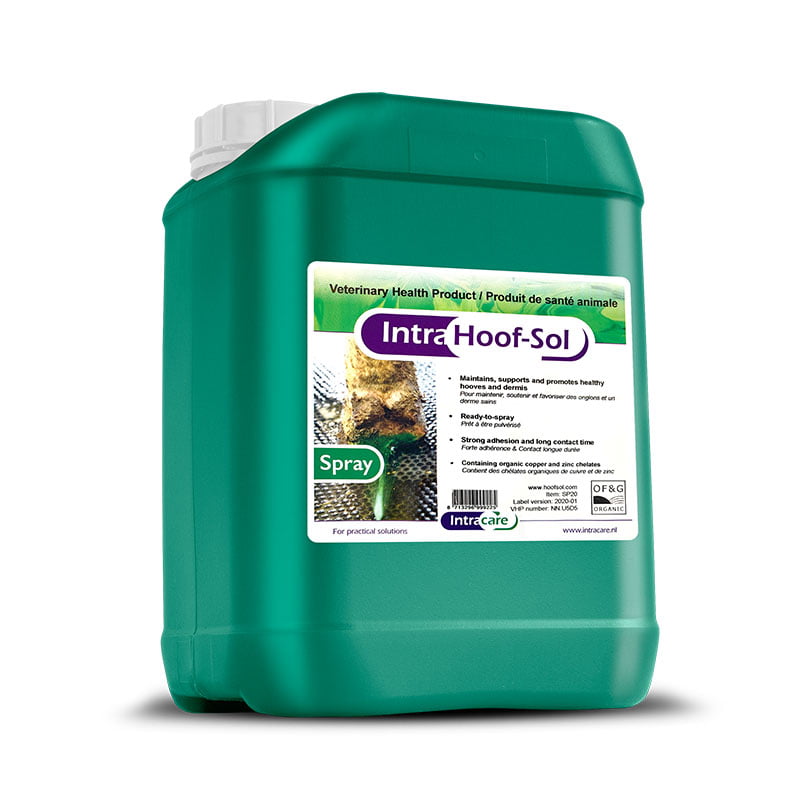
Hoof Sol Spray
Final Notes on Foot Baths
A herd-specific hoof health protocol is crucial for the overall success of your herd. Foot baths play a vital role in preventing hoof-related issues and maintaining the well-being of your cows. By understanding the importance of foot baths, setting up the right equipment, implementing effective techniques, and maintaining regular foot bath routines, you can enhance the health and productivity of your dairy farm.
Foot baths are just one piece of the puzzle that can lead to a successful and thriving herd. Individual treatment, specifically Digital Dermatitis, with Intra Hoof-fit Gel and whole herd hoof spraying with Hoof Sol Spray has been the economical and successful alternative or addition to the hoof health protocols of our clients.
Contact us if you would like to learn more.


